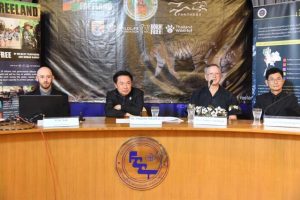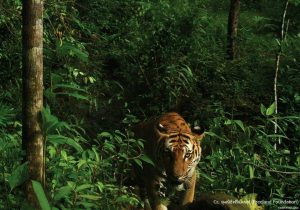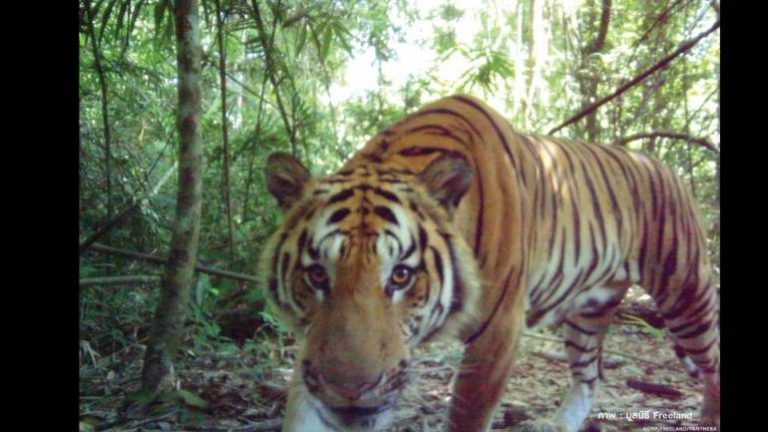Yesterday, conservationists were thrilled to announce the discovery of a new breeding population of tigers in Thailand. They called it a “miraculous” victory for a sub-species that was thought to be nearly wiped out by poaching.

Eighteen tigers — five male, seven female and six cubs — were seen on surveillance camera footage in the Dong Phaya Yen-Khao Yai forest complex in footage collected between June of 2016 and February of 2017.
The last time wild tigers were caught by surveillance cameras in Khao Yai was 15 years ago, in 2002.
There are 156 cameras installed in areas believed to be the habitat and feeding grounds of tigers at the site. Their progress will continue to be monitored and their safety fought for.

Dr. Songtham Sooksawang, National Parks Office Director, said that the exact location of the tigers will not be shared with the public in order to protect the burgeoning community from poaching, reported Thai PBS.
The camera footage confirms the presence of what is only the world’s second known breeding population of the endangered Indochinese tiger.
The only other growing population — the largest in the world with only about three dozen tigers — is based in a western forest corridor in Thailand near the border with Myanmar.
“The extraordinary rebound of eastern Thailand’s tigers is nothing short of miraculous,” said John Goodrich, the tiger program director at Panthera, a wild cat preservation group.
The footage, which shows female tigers and their cubs traipsing through the leafy jungle, was captured with help from the anti-trafficking group Freeland and Thai park authorities.

Indochinese tigers, which are generally smaller than their Bengal and Siberian counterparts, once roamed across much of Asia.
But today only an estimated 221 remain, with the vast majority in Thailand and a handful in neighboring Myanmar.
Aggressive poaching, weak law enforcement and habitat loss has rendered the animals all but extinct in southern China, Cambodia, Laos and Vietnam, according to scientists.

Tiger farms around the region have also boosted the trafficking trade by propping up demand for tiger parts, which are treasured as talismans and used in traditional medicines popular in China.
Conservationists and park officials attributed Thailand’s success story to a rise in counter-poaching efforts over the past few decades.
But they warned that the breeding populations remained vulnerable and would not thrive without a sustained commitment to busting poachers and taking down the lucrative trafficking trade.
The Dong Phayayen-Khao Yai forest complex still hosts a only modest tiger density of 0.63 tigers per 100 square kilometers.
It is a ratio on par with some of the world’s most threatened tiger habitats, according to Freeland.
“It’s crucial to continue the great progress made by the Thai government to bolster protection for tigers at the frontlines,” said Kraisak Choonhavan, the group’s board chairman.
“As long as the illegal trade in tigers continues, they will need protection.”




